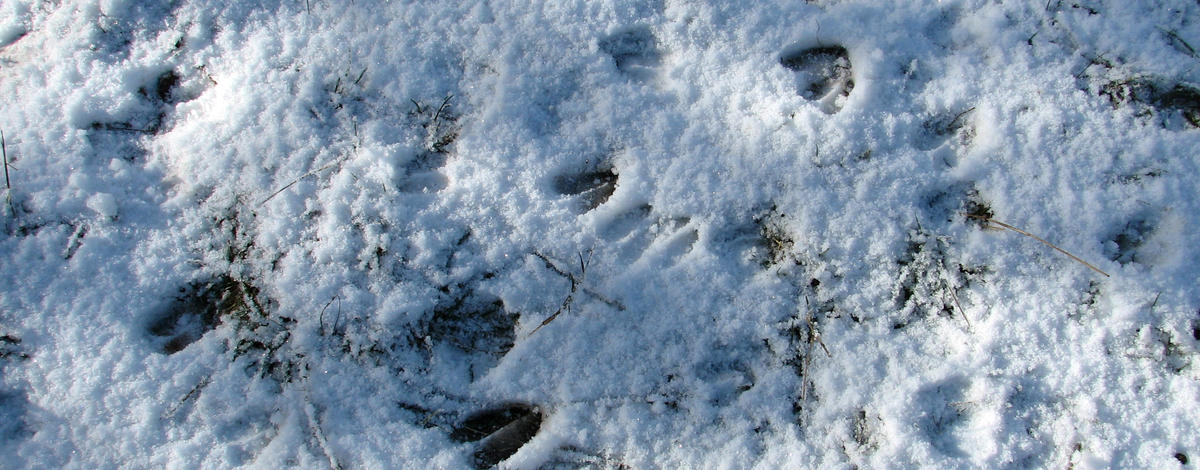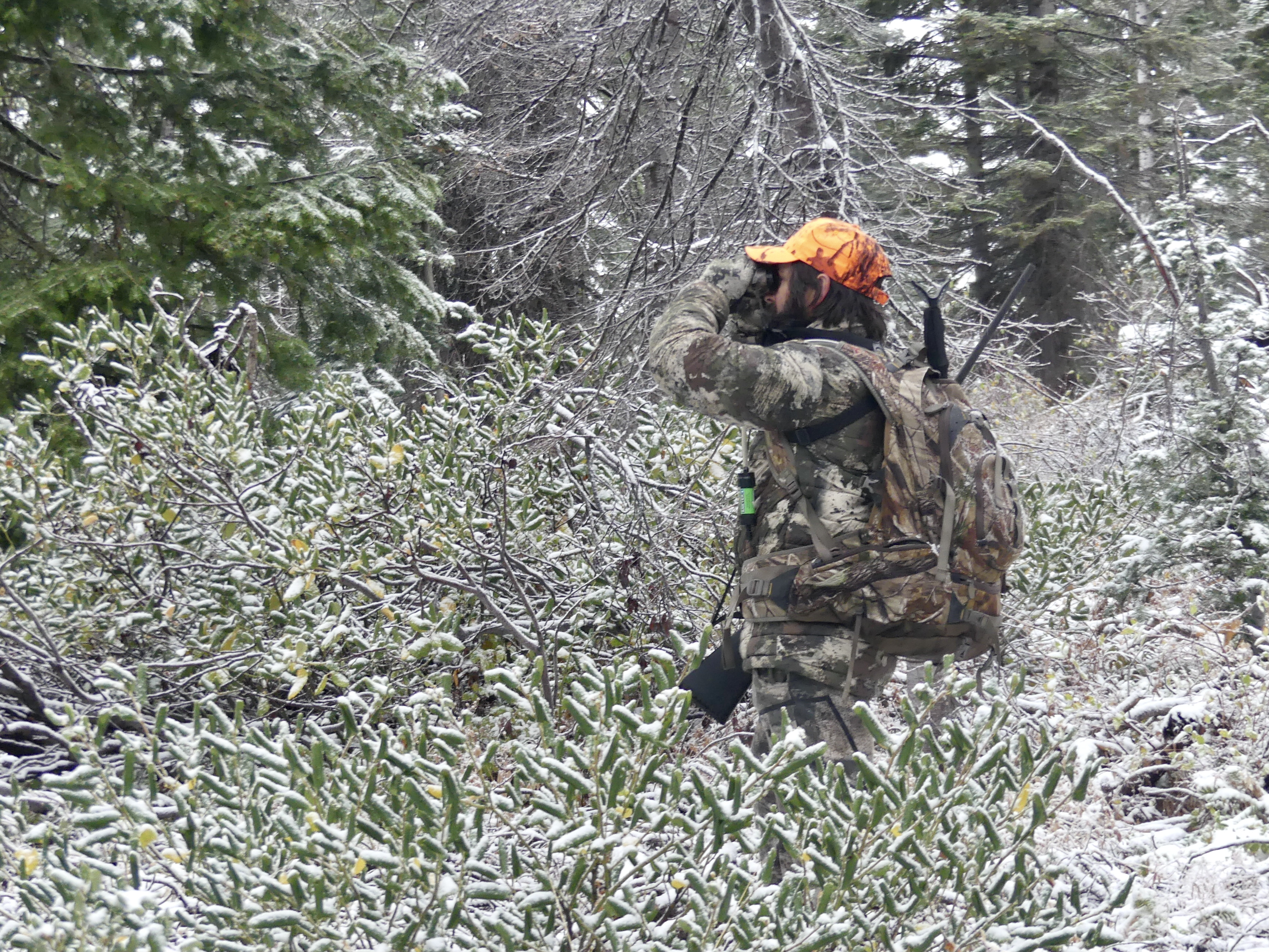
Looking for signs of game and knowing how to read them can mean the difference between a stocked or empty freezer. Tracks, rubbings and scat (droppings) are all valuable clues. Reading animal sign is a bit like reading a mystery novel. You discover clues then use those clues and your knowledge to discover “who-done-it.” It’s exciting and challenging!
Reading animal sign can be a bit tricky. For example, how old is the track, rubbing or scat? It might not be possible to get an exact time when a sign was left, but you can get an idea if a sign is relatively new or many months old. Here are some tips to help you and a few details about members of the deer family.
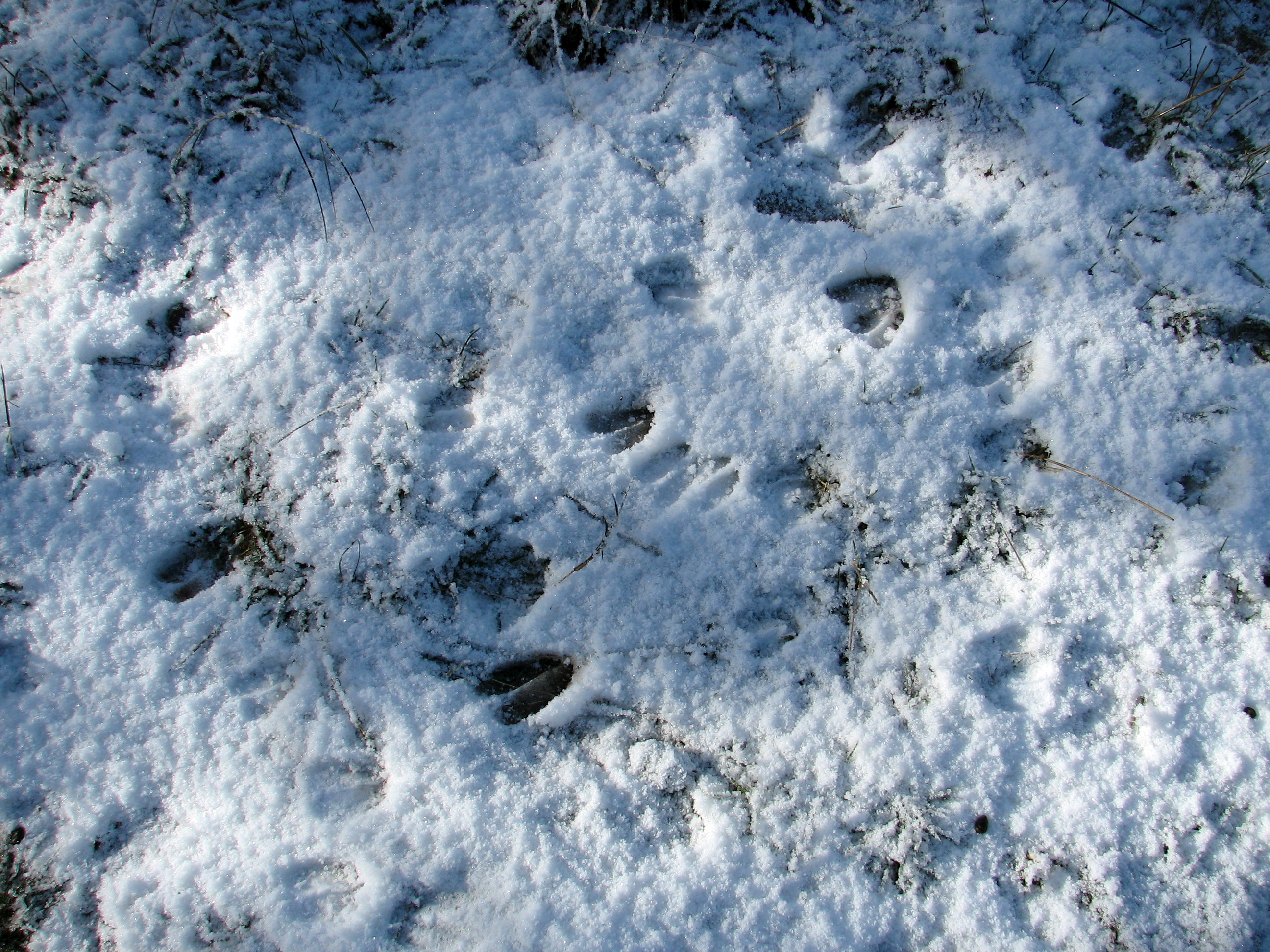
Tracks: New tracks will have sharp edges; older tracks will have rounded edges and look larger from erosion. Look at tracks for dried water drops or dried water lines. If it has been months since the last rain, you know those tracks are old.
Scat: The way scat appears will vary with what the animal has eaten. Generally, herbivores (plant eaters) will have a looser scat when eating spring and summer plants that contain a lot of water. Think about a cow pie shape instead of a jellybean shape. Stabbing scat with a stick and breaking it open can help you determine if the scat is newer or older. Fresh scat will be darker in color. Dry, crumbly scat was most likely deposited months prior to your discovery.

Rubbings: Members of the deer family rub their antlers on trees to remove velvet from antlers and to mark an area with scent. Fresh rubbings will feel wet and have sap oozing from the rubbed area. Look below a rubbing for strips of removed bark. If the bark pieces are dry or faded in color, the rubbing is fairly old. The side of the tree the rubbing is on will tell you the direction the animal was traveling when it stopped to leave its mark.
Moose
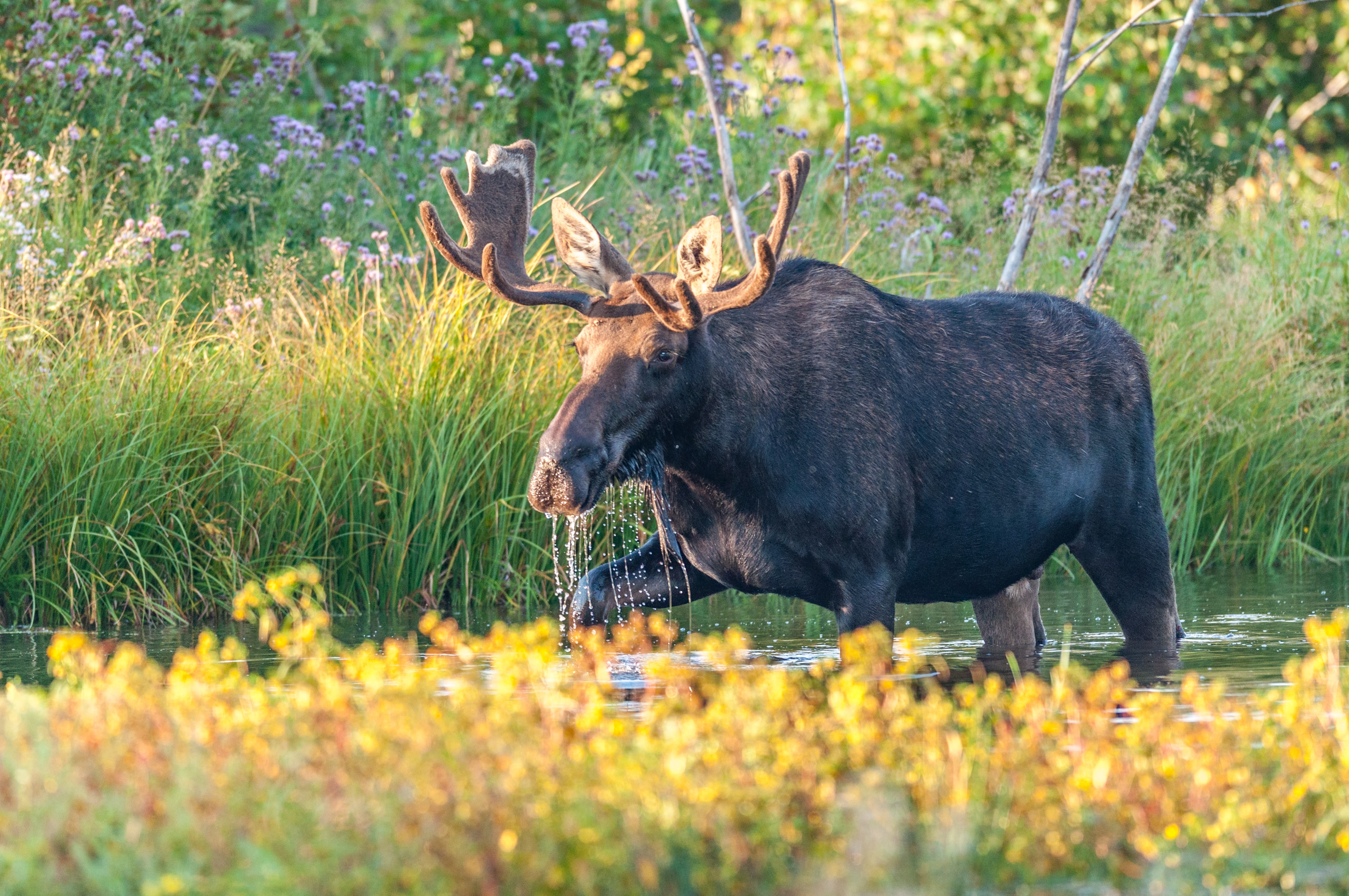
Tracks:

• Front track: 4⅜” - 7” long; 3¾” – 6” wide
• Rear track: 4⅛” – 6½” long; 3½” – 4⅝” wide
• Heart-shaped; point in direction of travel
• Front track larger than rear track
• Slightly asymmetrical
Scat:
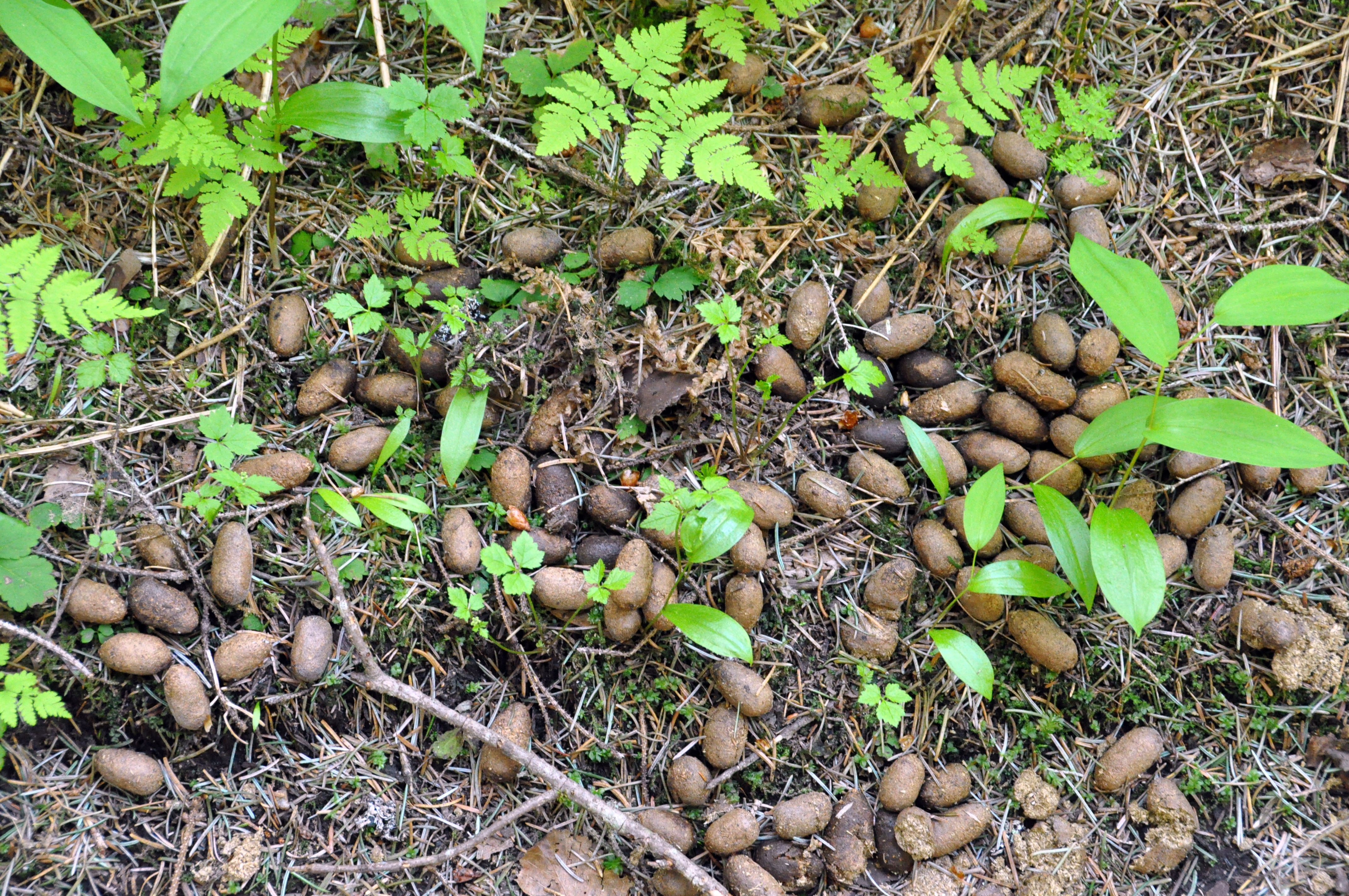
• Pellets ½” – ⅞” in diameter; ⅞” – 1¾” long
• Rounded or block-like
• May be patties when feeding on wetland vegetation
Rubs:
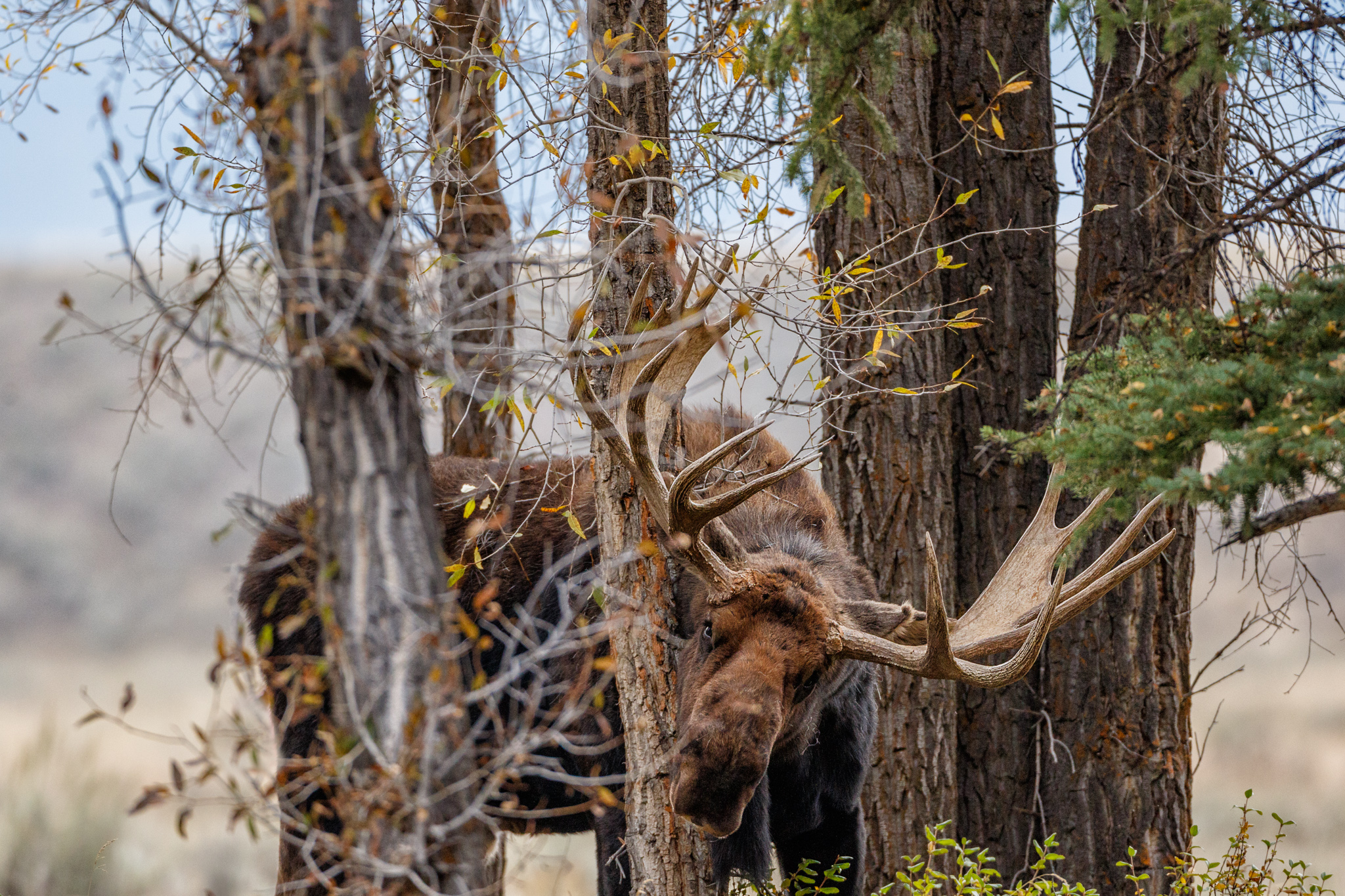
• 15” – 8’ off the ground; usually long strips pulled from trees
• Bushes and shrubs with numerous broken branches and stripped bark from thrashing head from side to side
Elk

Tracks:
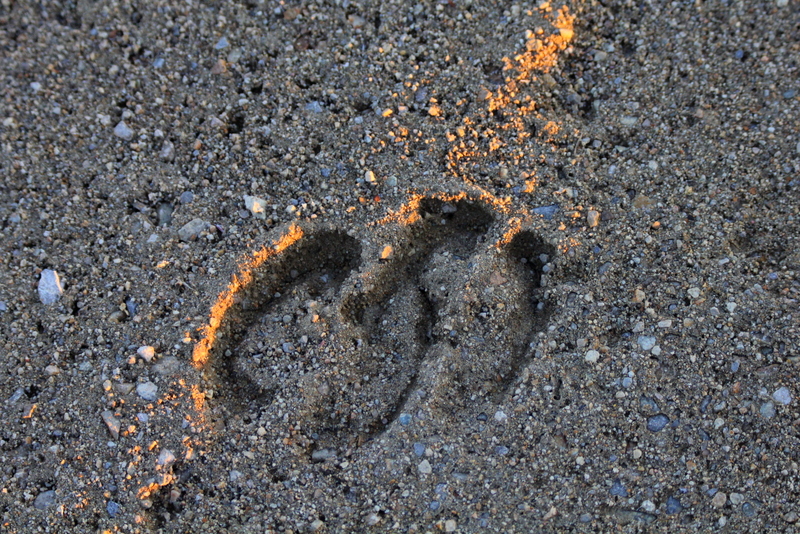
• Front track: 3” – 4⅞” long; 2⅝” – 4⅝” wide
• Rear track: 2½” – 4½” long; 2⅜” – 4” wide
• Front track larger than rear track
• Hooves are rounded; sometimes pointed with wider tips
Scat:
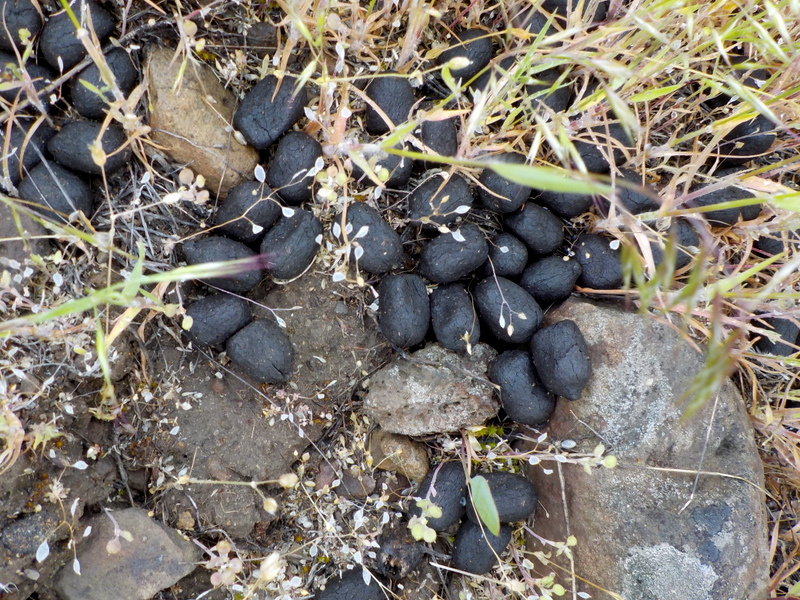
• Oval-shaped pellets ⅜” – ⅝” diameter; ½” – 1½ ” long
• May look like cow pies 5” – 6” in diameter when eating wet vegetation
• May have a dimple at one end and a point at the other end
Rubs:
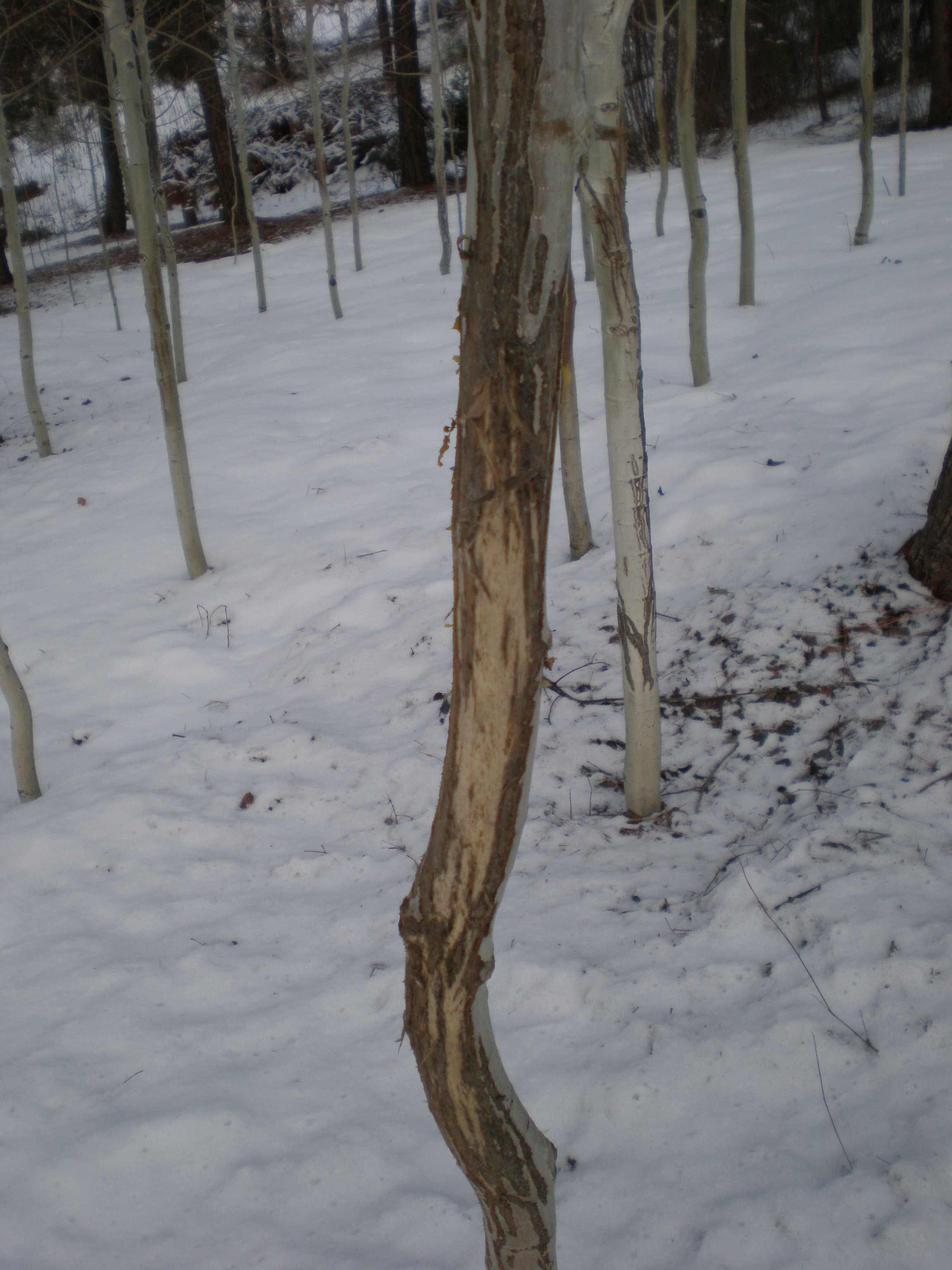
• 14” – 6½’ off the ground on small-diameter trees
• 2” – 5’ off the ground on wider trees
• Hair often found on trees
Mule and White-tailed Deer
Signs look similar and can be difficult to tell apart.
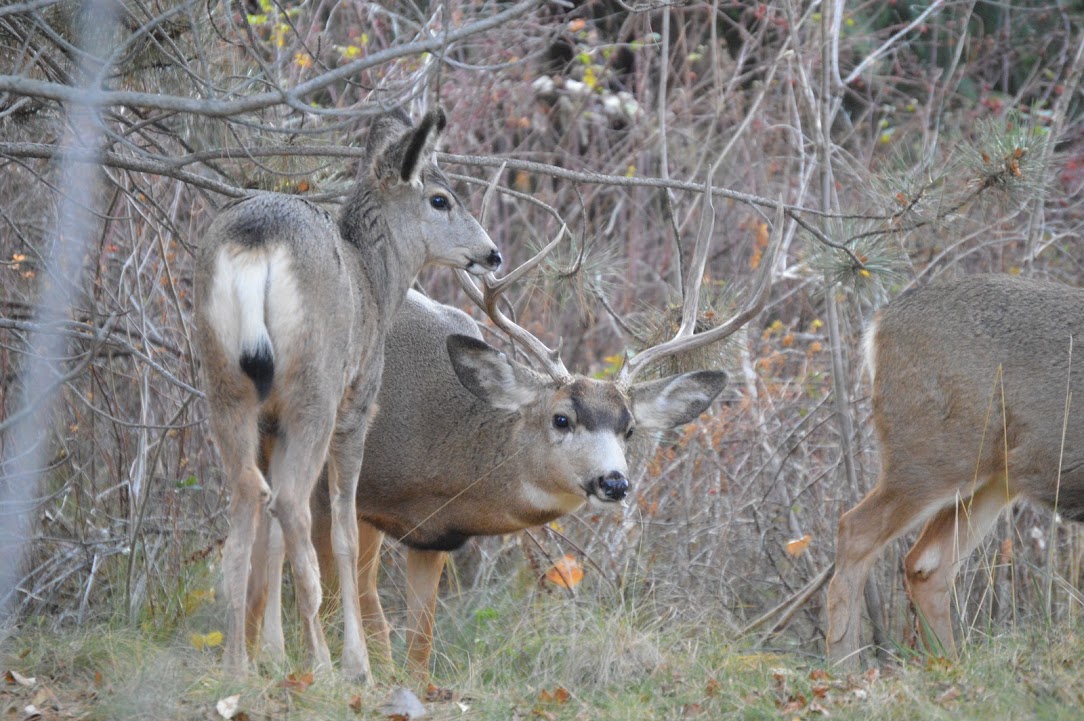
Tracks:
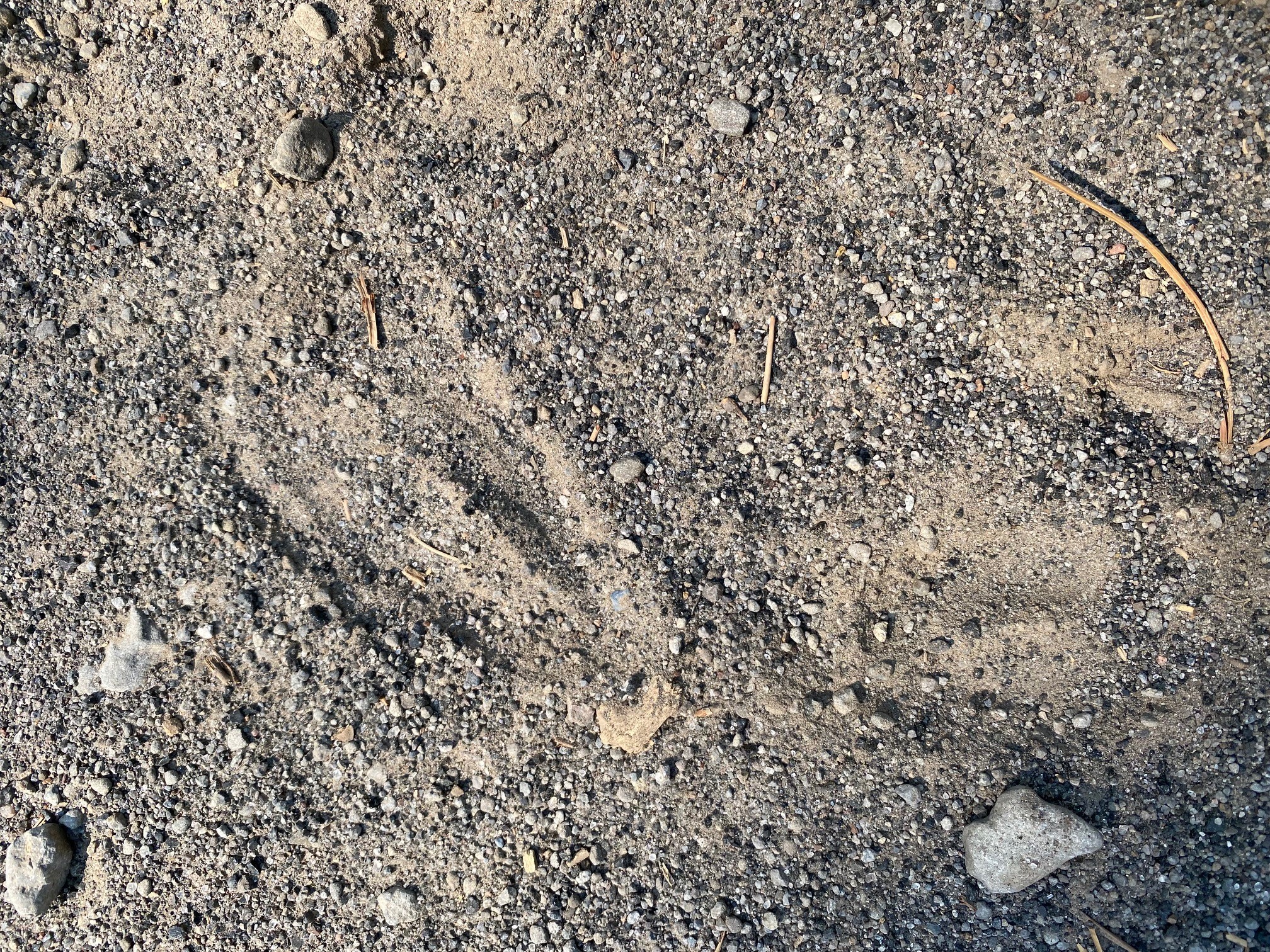
• Front track: 2¼” – 4” long; 1⅝” – 2¾” wide
• Rear track: 2” – 3½” long; 1½” – 2⅜” wide
• Front track larger than rear track
• Heart-shaped; point in direction of travel
Scat:
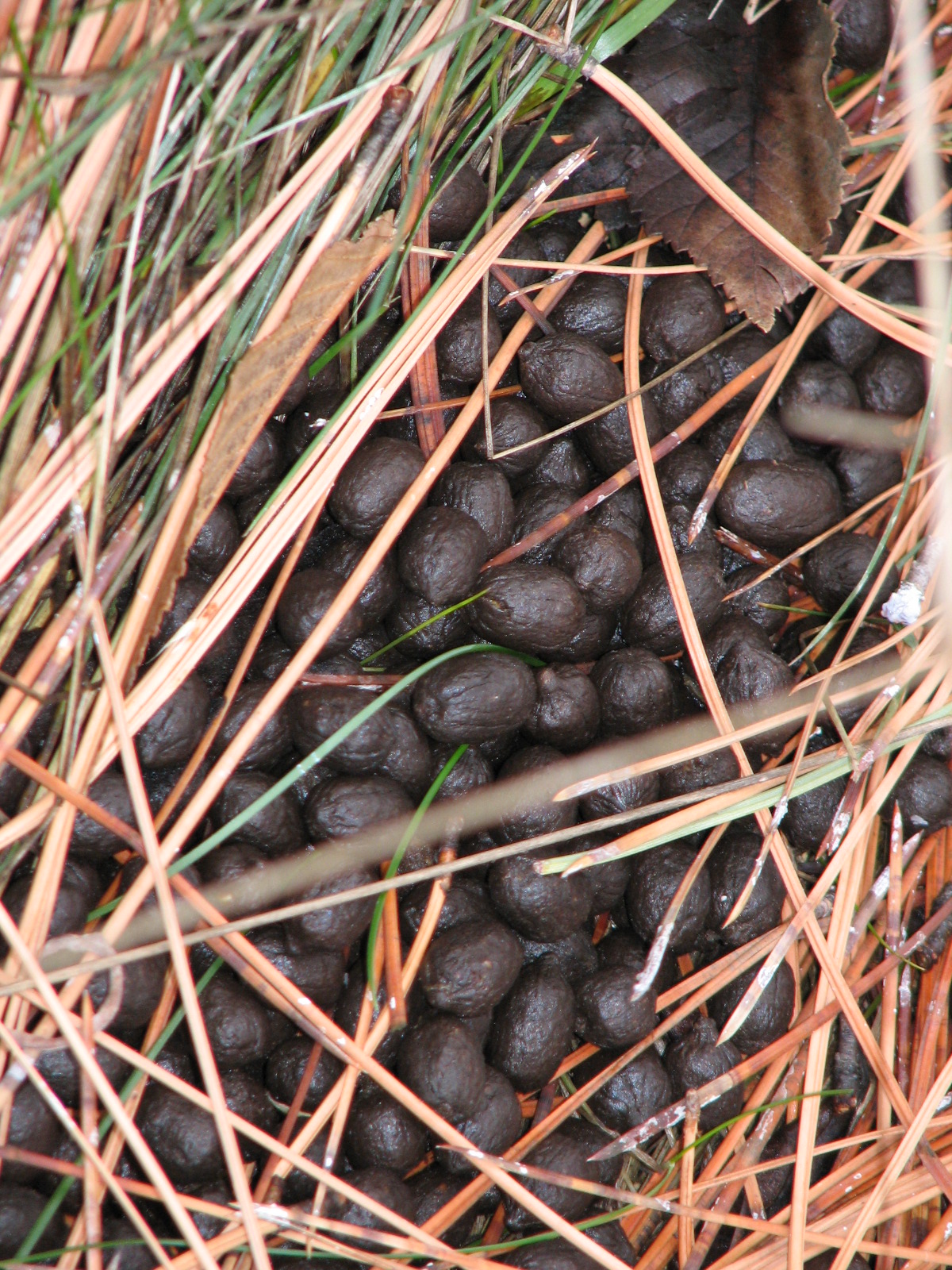
• Elongated or semi-round pellets ½” – ⅝” diameter; ½” – 1” long
• Highly variable
• May have a dimple at one end and a point at the other end
Rubs:
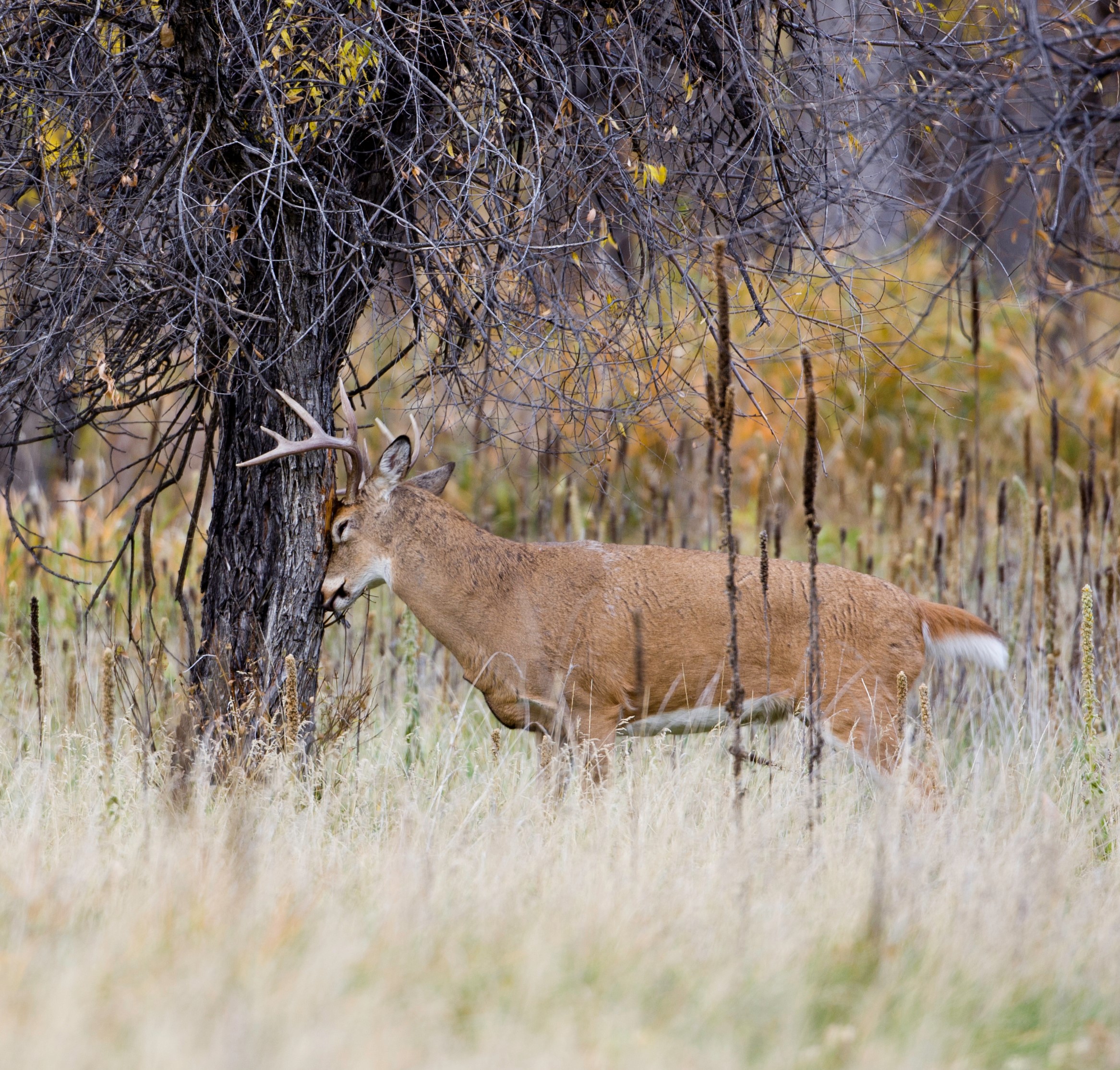
• Mule deer 10” – 4’ off the ground
• White-tailed deer 8” – 3½’ off the ground on smaller trees and willows
• Hair usually not present

